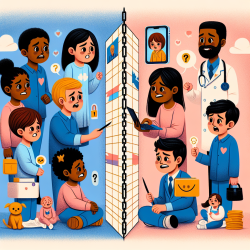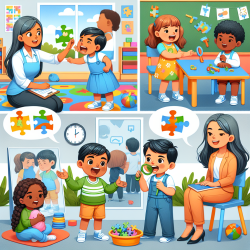Introduction
In the field of speech-language pathology, understanding the interplay between auditory and visual cues is crucial for effective communication. A recent study, "Seeing Emotion with Your Ears: Emotional Prosody Implicitly Guides Visual Attention to Faces," sheds light on how emotional prosody influences visual attention. This blog will explore the study's findings and discuss how practitioners can apply these insights to improve therapeutic outcomes for children.
The Study at a Glance
Conducted by Rigoulot and Pell at McGill University, the study examined how emotional prosody—the rhythm and melody of speech—affects where we direct our gaze when viewing faces. Participants were exposed to emotional utterances while viewing faces expressing different emotions. The study found that participants looked longer and more frequently at faces that matched the emotional tone of the voice, with the strongest effects observed for fearful expressions.
Implications for Practitioners
The study's findings have significant implications for practitioners working with children. Here are some practical ways to incorporate these insights into therapy:
- Enhance Emotional Recognition: Use audio-visual tools that pair emotional prosody with facial expressions to help children improve their ability to recognize and interpret emotions.
- Develop Multisensory Learning Strategies: Incorporate exercises that engage both auditory and visual modalities, reinforcing the connection between emotional prosody and facial cues.
- Focus on Fear and Safety: Given the study's findings on fear, create safe environments where children can explore and express emotions without anxiety.
Encouraging Further Research
While the study provides valuable insights, further research is needed to explore the nuances of emotional prosody across different contexts and populations. Practitioners are encouraged to engage in or support research that investigates how these findings can be generalized and applied to diverse therapeutic settings.
Conclusion
Understanding the role of emotional prosody in guiding visual attention can significantly enhance therapeutic practices. By integrating these findings into their work, practitioners can create more effective and engaging therapy sessions that support children's emotional and communicative development.
To read the original research paper, please follow this link: Seeing Emotion with Your Ears: Emotional Prosody Implicitly Guides Visual Attention to Faces.










